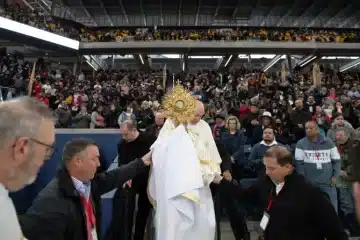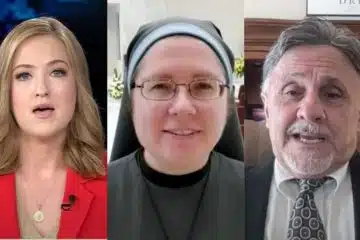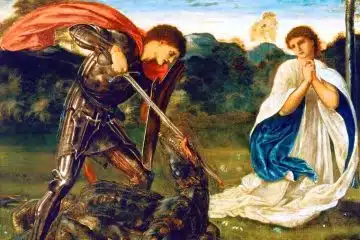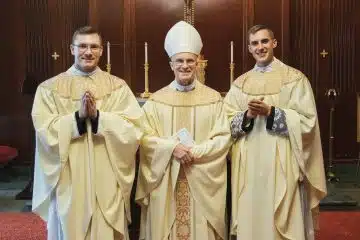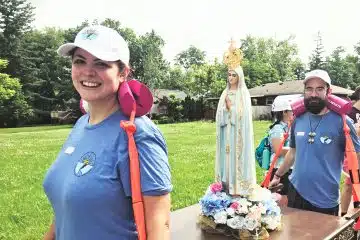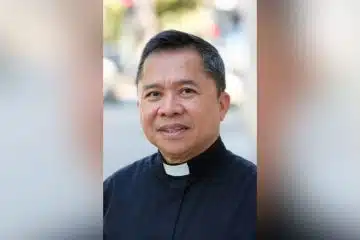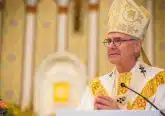The Catholic Moment: A conviction does not prohibit reconciliation
Wednesday, April 1, 2009
By Scott Mussari
Three essentially obscure men — Gregory Bryant-Bey, Brett Hartman and Dismas — are separated by thousands of years and tens of thousands of miles, and yet are linked by one common distinction. All three were considered useless and worthless and deemed disposable by society.
In actuality these men shared more than merely this valueless categorization. Each of them was a criminal convicted of heinous and violent crimes. Each existed in virtual anonymity until the very end of their lives. The people in power and the governments of their day sentenced each to the death penalty.
Gregory Bryant-Bey was executed by lethal injection by the state of Ohio last Nov. 19. Brett Hartman is scheduled to be executed in a similar manner this April 7. Dismas was executed via crucifixion adjacent to arguably the most famous person of all time to receive capital punishment, Jesus Christ.
At the risk of romanticizing the horrific acts these men and other felons commit during their lives, there is merit in examining more closely the final moments before their deaths.
With regards to the tale of Dismas, all four of the Gospels tell of two others who were killed next to Christ. Only chapter 23 of Luke, however, provides the additional details of how this sinner and lawbreaker speaks up and speaks out for Jesus. Unlike friends and followers who abandon the Lord, Dismas defends and rebukes the other criminal and not only recognizes the Savior in his midst, but asks to be remembered in Christ’s kingdom.
There are numerous indications of how significant this event is in the eyes of the church. One, is this bad prisoner who obviously had done enough evil to warrant a verdict of death, is generally referred to as the Good Thief. Two, is that although his name is not revealed in sacred Scripture, knowledge of his identity was passed on from a fourth century text titled the “Gospel of Nicodemus.” Three, is based on artistic renditions of the crucifixion which often depict Christ’s gaze or his head tilted towards the right to accept and welcome Dismas, since tradition typically places him on this particular side of Jesus. Four, is while Dismas has never been officially canonized as a saint, a memorial in his honor is celebrated on March 25 from the belief this was the calendar date of his death. Five is his claim to being the patron of those condemned to death and a portion of the cross he died upon is preserved as a relic in the Chapel of Relics in Rome.
Beyond these anecdotal aspects, the legacy of Dismas lies in his symbolism for the whole of humanity. All of us are sinners who cannot earn our way to eternity. Yet despite our unworthiness, we are freely given the gift of heaven, with the only requirement being we ask for this blessing. For some, simply admitting we need our Savior is too steep a path to climb and our stubborn independence forever keeps us at arms’ length from Christ. For Dismas, despite his former offenses and transgressions, he was able to clearly see Jesus’ presence and called to Him by name. Are we alive enough as Catholics to rise above our pasts to do likewise? Do we truly trust that our Savior can and will focus beyond our faults to accept and welcome us too?
Many people seem to regularly forget the reality that every person is made in the image of God, and therefore possesses a genuine value. This applies to the beautiful as well as the outcast, to the financially rich and the poverty stricken poor, to the vocal majority and the silent minority, to the law abiding and those such as Gregory Bryant-Bey and Brett Hartman.
No matter what we have done previously, the present always allows a pure and loving heart to ask for forgiveness and to seek reconciliation. It was not too late for Dismas, or for the 176 inmates in Ohio currently on death row, or for any of us either. We are next to our Lord right now, and the question we must answer is to which side of Him are we on?
Scott Mussari is the director of faith formation at St. Columban Church in Loveland and can be reached at [email protected].



